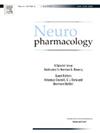基因与环境的相互作用在社会功能障碍中的作用:关注小鼠研究的临床前证据。
IF 4.6
2区 医学
Q1 NEUROSCIENCES
引用次数: 0
摘要
人类和动物研究表明,遗传和环境因素可对行为功能产生强烈的调节作用,包括社会行为的表达及其功能障碍。一些基因与以社会行为改变为特征的病症有关,如攻击性/反社会人格障碍(ASPD)或自闭症谱系障碍(ASD)。环境刺激(如体育锻炼、丰富环境)或逆境(如慢性压力、社会隔离)可能会分别改善或损害社会交往。虽然遗传和环境因素对社会行为的独立影响已在各种人类和动物研究中进行了评估,但它们对社会功能的交互影响却鲜有广泛研究。基因突变和环境变化确实可以通过复杂的相互影响而相互影响,例如诱发协同、拮抗或互动的行为结果。这种复杂性在人类群体中很难分解,因此鼓励在动物模型中进行研究,尤其是最适合进行遗传操作的小鼠物种。在此,我们回顾了基因与环境相互作用对社会行为及其功能障碍影响的临床前证据,重点是对实验室小鼠的研究。我们将自然发生的突变、选择性繁殖或转基因小鼠与多种环境操作相结合,包括积极(丰富环境、体育锻炼)和厌恶(社会隔离、母体分离和压力)经历的研究结果纳入其中。我们从这些结果在不同小鼠模型和社会测试中的通用性,以及它们对人类社会功能障碍研究的影响方面,对这些结果的影响进行了批判性的讨论。本文章由计算机程序翻译,如有差异,请以英文原文为准。
The role of gene-environment interactions in social dysfunction: Focus on preclinical evidence from mouse studies
Human and animal research has demonstrated that genetic and environmental factors can strongly modulate behavioral function, including the expression of social behaviors and their dysfunctionalities. Several genes have been linked to pathologies characterized by alterations in social behaviors, e.g., aggressive/antisocial personality disorder (ASPD), or autism spectrum disorder (ASD). Environmental stimulation (e.g., physical exercise, environmental enrichment) or adversity (e.g., chronic stress, social isolation) may respectively improve or impair social interactions. While the independent contribution of genetic and environmental factors to social behaviors has been assessed in a variety of human and animal studies, the impact of their interactive effects on social functions has been less extensively investigated. Genetic mutations and environmental changes can indeed influence each other through complex mutual effects, e.g., inducing synergistic, antagonistic or interactive behavioral outcomes. This complexity is difficult to be disentangled in human populations, thus encouraging studies in animal models, especially in the mouse species which is the most suitable for genetic manipulations. Here we review the available preclinical evidence on the impact of gene-environment interactions on social behaviors and their dysfunction, focusing on studies in laboratory mice. We included findings combining naturally occurring mutations, selectively bred or transgenic mice with multiple environmental manipulations, including positive (environmental enrichment, physical exercise) and aversive (social isolation, maternal separation, and stress) experiences. The impact of these results is critically discussed in terms of their generalizability across mouse models and social tests, as well as their implications for human studies on social dysfunction.
求助全文
通过发布文献求助,成功后即可免费获取论文全文。
去求助
来源期刊

Neuropharmacology
医学-神经科学
CiteScore
10.00
自引率
4.30%
发文量
288
审稿时长
45 days
期刊介绍:
Neuropharmacology publishes high quality, original research and review articles within the discipline of neuroscience, especially articles with a neuropharmacological component. However, papers within any area of neuroscience will be considered. The journal does not usually accept clinical research, although preclinical neuropharmacological studies in humans may be considered. The journal only considers submissions in which the chemical structures and compositions of experimental agents are readily available in the literature or disclosed by the authors in the submitted manuscript. Only in exceptional circumstances will natural products be considered, and then only if the preparation is well defined by scientific means. Neuropharmacology publishes articles of any length (original research and reviews).
 求助内容:
求助内容: 应助结果提醒方式:
应助结果提醒方式:


